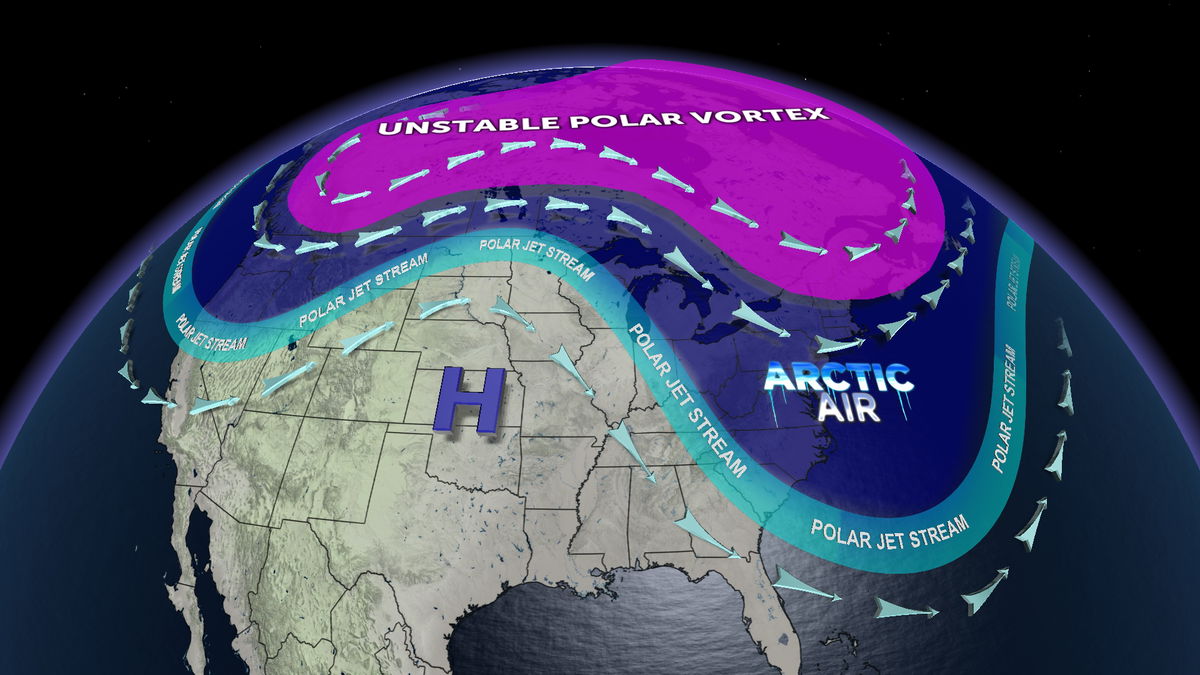Winter Weather Special: Diving into the polar vortex
Meteorology is a relatively new field, which means new weather terms pop up and spread like "megafires " (that's a new term coming out to describe intense and fast-growing wildfires fueled by climate change). In winter, you've probably also heard the term "polar vortex" more commonly in recent years to refer to cold air outbreaks. While this term is new to many, what it describes has always been around.
It takes time for research in academia to trickle into the public consciousness, and the polar vortex has been studied for decades before it began making headlines. The first mentions of the polar vortex can be traced back to papers from the 1850s when meteorologists described air currents around the globe.

Today, a lot can be said about the polar vortex and its impacts. The polar vortex is a circulation of intense cold air at the poles of the Earth, a natural result of the distribution of temperatures and winds across the planet's surface. Most of the year, intense wind currents known as jetstreams confine the polar vortex to the poles.
The jetstreams are the barriers between airmasses at different latitudes, and their movement impacts much of our daily weather. In wintertime, the jetstreams weaken as the difference in temperatures shrinks, allowing the polar vortex to shift from its usual position over the poles.

When the jetstream weakens and the polar vortex pattern becomes more unstable, this can trigger cold air outbreaks at lower latitudes. Many will remember the February 2021 Deep South freeze and the worst infrastructure failure in Texas history that followed. This was a result of the jetstreams weakening and slipping south and allowing intense polar air to infiltrate the south.
It's unclear how a changing climate will affect the polar vortex in the future. Warmer temperatures across the globe may weaken the polar vortex, or a sharper gradient in warmer low-latitude temperatures against cold polar air could also boost the jetstreams. For now, the polar vortex is here as it has always been and will be something to keep an eye on this winter season.
